On the weekend of July 6-7, 2024, my sister Melissa and I decided to spend some time doing more exploring on the Rocky Mountain Front. We decided to base ourselves out of Augusta, Montana. We stayed at the Wagons West Motel. The motel also has a restaurant attached and an RV camping area behind it. It looked like they were doing some improvements on the property and we had a pleasant stay.
The first morning we decided to get up early and do the hike to Muddy Creek falls. This hike has been on my list for years. In fact, I was all ready to make the hike a couple of years ago, but I found out just a few days before I was planning on going that the trail was closed because there was a dead moose on the trail that was attracting bears. The trail remained closed all of that summer.
Muddy Creek Falls is actually closer to Bynam or Choteau than Augusta, but we had some other plans for the weekend that were closer to Augusta, so we decided to stay there. When we got up in the morning, it was actually pretty cool and raining, but the weather report said it was not supposed to last, so we made the drive up to the trailhead. Well, we actually drove up to the Blackleaf Canyon trailhead first by accident. At the time of writing this blog, there are no signs that actually point you to Muddy Creek Falls, so you kind of need to know where you are going. I will try to give detailed instructions to the trailhead later on in this post. It actually worked out OK though, because we got to see something new and by the time we backtracked and figured out where we needed to be, the rain had mostly stopped.
Near the start of the trail to Muddy Creek Falls looking up the canyon. In full disclosure, this was taken after we got back, that is why it looks sunny.
The hike to the falls is about 5 miles round trip. There is minimal elevation gain, but there are stretches of the trail that are rocky and may require navigating some boulders. For some reason during the hike in, we had a difficult time staying on the trail. We often found ourselves just following the creek bed. On the way back out, we had a little easier time following the trail, but there were still areas that were washed out and/or covered in gravel from spring runoffs. Even though it was easy to lose the trail sometimes, you never needed to worry about getting lost or anything. You are pretty well contained in the valley between two mountains and then eventually the steep canyon walls, so there is never really any doubt about where you need to go. It might just be a matter of finding the best/easiest route to take.
In the slot canyon approaching the falls. The black dot in the center of the frame is my sister hiking for some perspective. The falls can be seen as small white strip above her.
The area is known to have grizzly bears, so I would highly recommend hiking with bear spray or some kind of bear deterrent. There are also moose in the area which could become dangerous if they feel cornered or have young with them. We did not see any bears on our hike. We saw moose sign but no moose. We did see a mountain lion about a mile into our hike. It crossed the creek bed maybe 100 yards in front of us. Since it had been raining I did not have my camera out at the time, so unfortunately I did not get any pictures or video of it. On our hike out we found a pika in a rock slide, which is where they typically like to live. I have seen them on several other hikes, but this is the first time I got some relatively close up pictures of one. It was very busy and never sat still for very long though. We also saw a lot of bird species and many wild flowers and berries along the trail. Besides the wildlife and the rocks, I would also make sure you come prepared for the weather. The Rocky Mountain Front can experience fast weather changes without warning, so you should come prepared for all conditions.
You can click on the photos below for a larger view.
A pika amongst the rocks.
Another shot of the pika looking for food to bring back to its den.
Please check out the gallery below for some of the wildflowers we found on our hike.
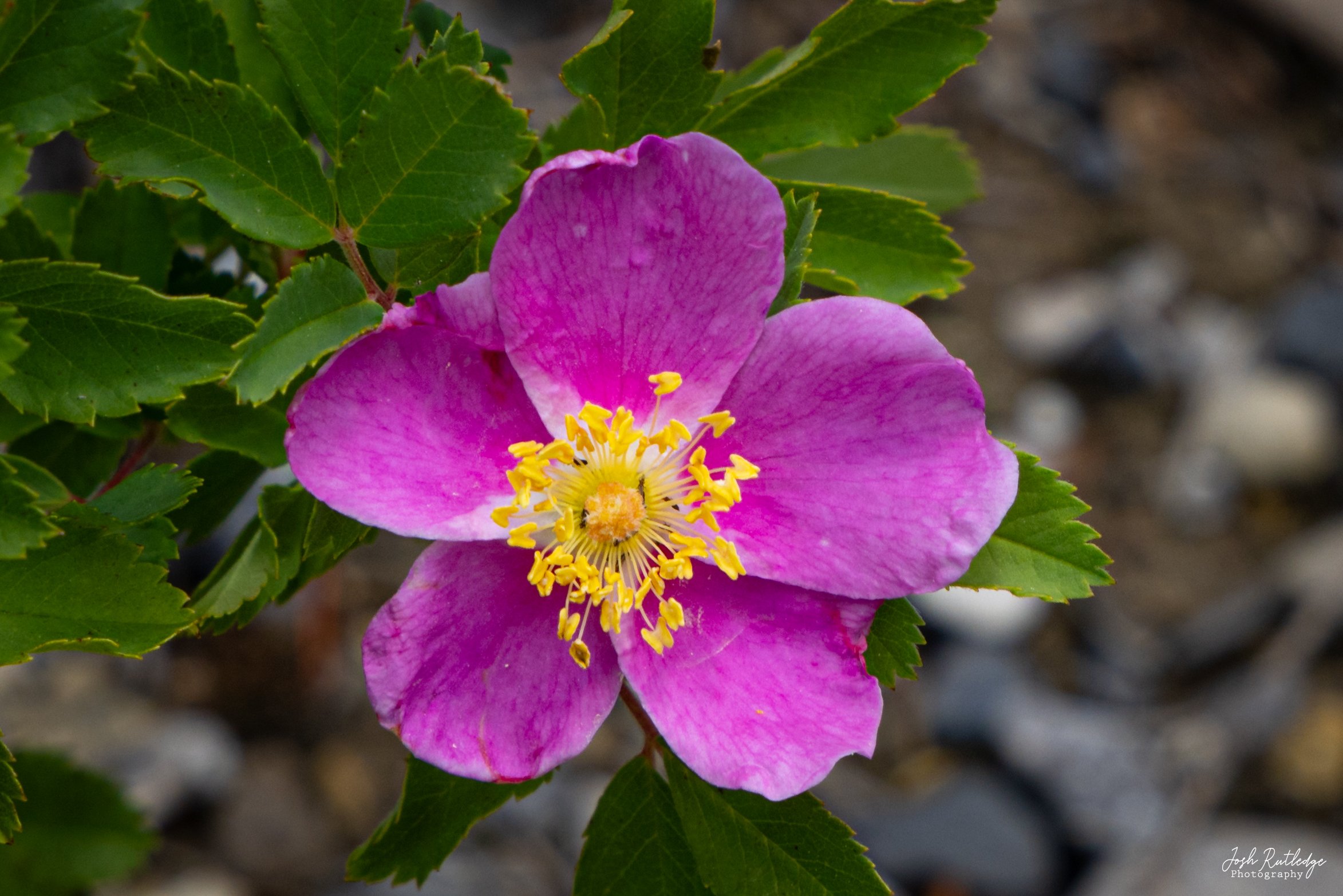




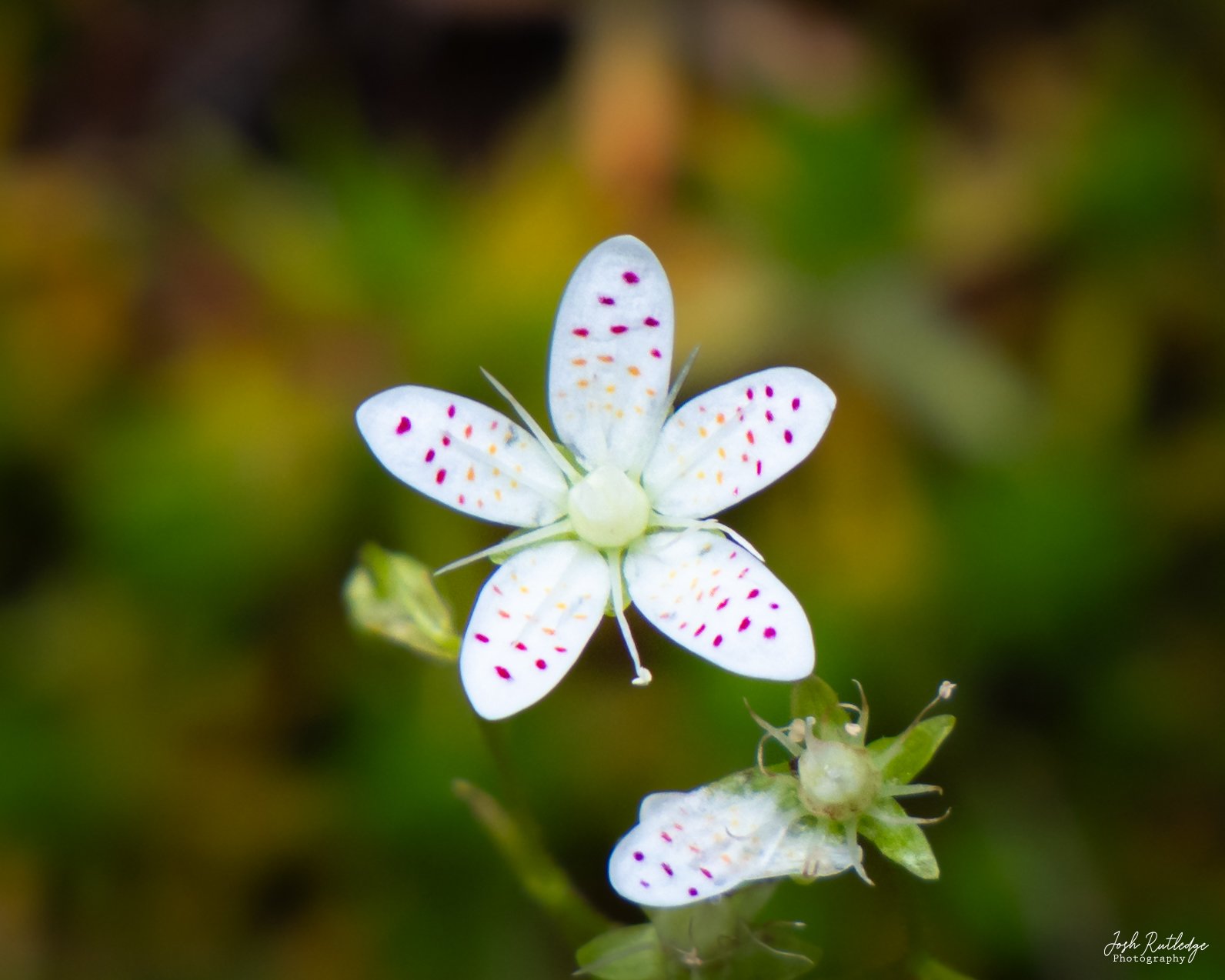
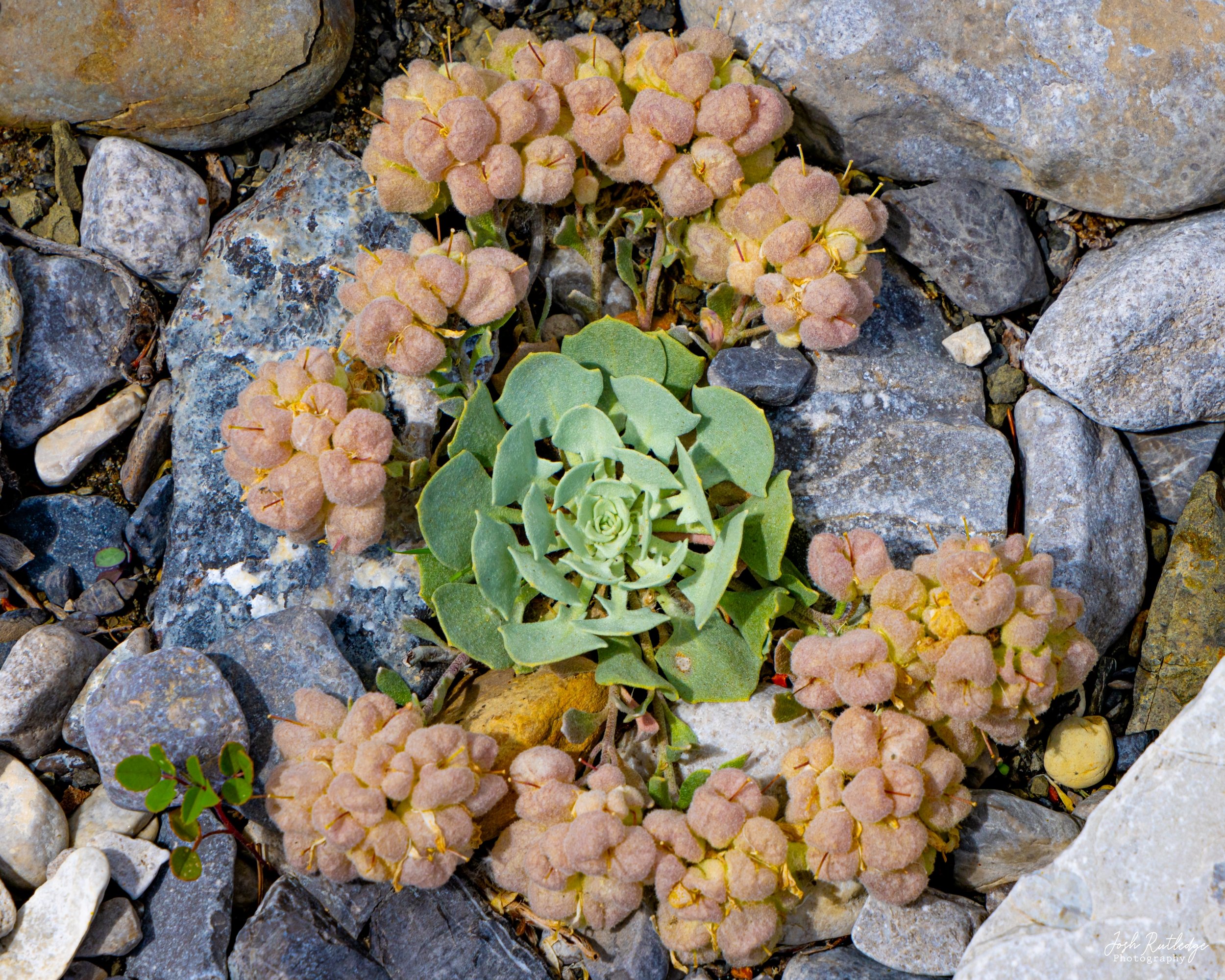

The history of this area is diverse. Long ago the area where you start the hike would have been part of the Old North Trail. This was a trail the Native Americans used to travel north and south along the rocky mountain front from Canada all the way to Mexico. In more recent history there was oil and gas exploration that happened in this area. In fact, the first part of the trail to the falls actually follows an old road bed from the exploration. There are still some artifacts left from the oil and gas exploration as you go up the canyon. From this area’s most ancient history, there is the opportunity to find fossils as you look through the exposed rocks along the creek bed.
Most of the year the creek bed is dry for the majority of the hike, so don’t panic if you don’t see water and are afraid there will not be any at the falls. The water runs underground, but as you approach where the canyon starts to narrow you will start to see water flowing. We were actually surprised by how much water was in the pool at the base of the falls. I had seen pictures that were taken later in the summer, and there was only a very small pool at the falls. So depending on what time of the summer you go and what the weather conditions have been, you may see more or less water, but the falls does usually run all summer. It is hard to predict exactly when would be the best time to make this hike, but I would probably suggest mid to late June through September. Depending on how much snow fell and how cool or wet the spring/fall is, your mileage may vary. Since you need to access the Blackleaf WMA, you are not allowed to go in any earlier than May 15th or later than December 1st. Typically that time of year there would be too much snow to access the area anyway.
Muddy Creek Falls at the end of the canyon. Notice the hanging rock that sits above the falls.
Once we reached the falls, we stopped and had a snack and hung out by the falls for maybe an hour resting and taking pictures. In that whole time we never saw another person. We were about half way back to the trailhead when we finally passed a group of three people heading up, so it’s not a well used area. As I mentioned, the weather changes fast in the mountains, so even though it was cool and rainy when we started, by the time we got back to the trailhead it was sunny and almost hot.
Check out the gallery below for photos of the falls and an American Dipper that was feeding there.
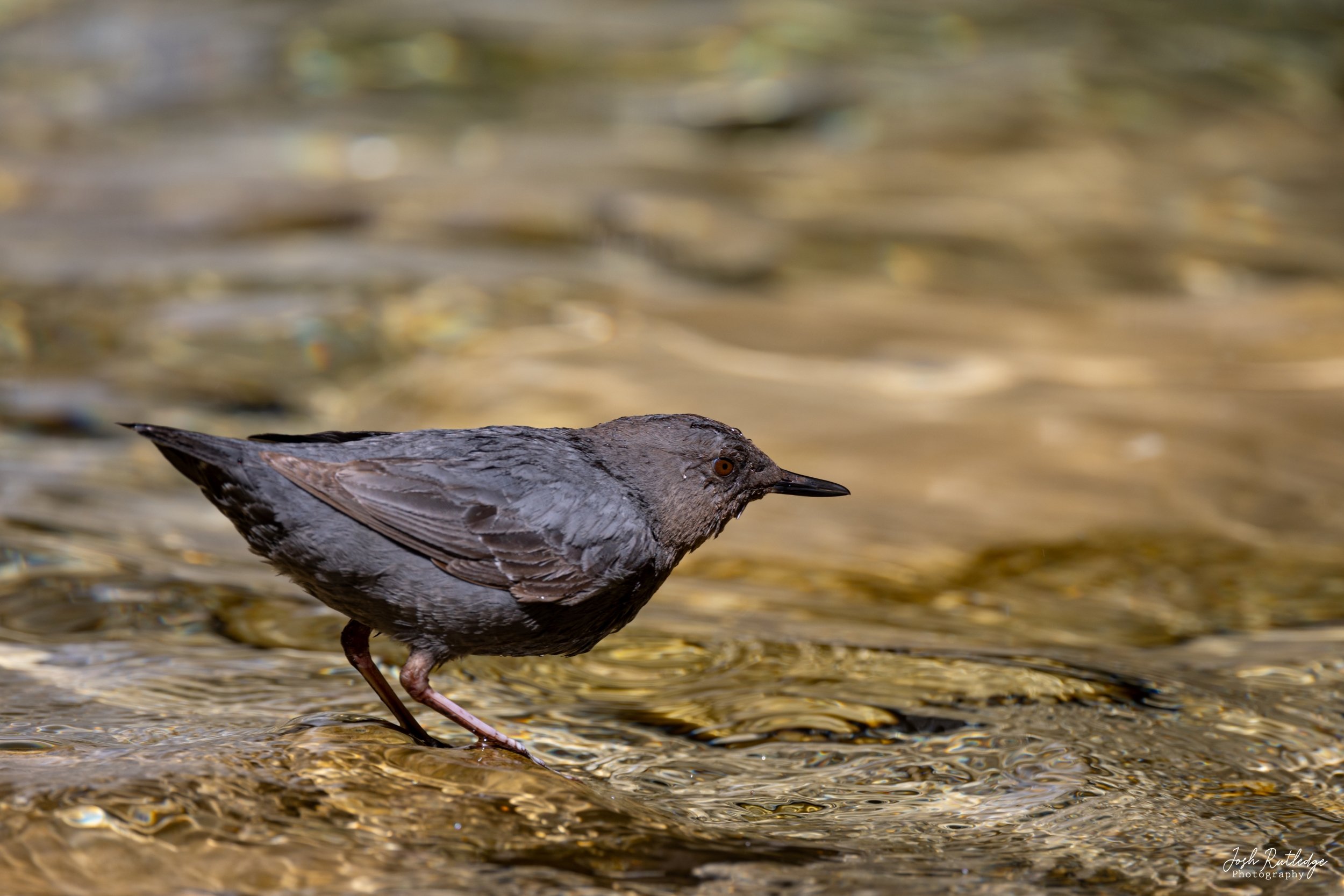
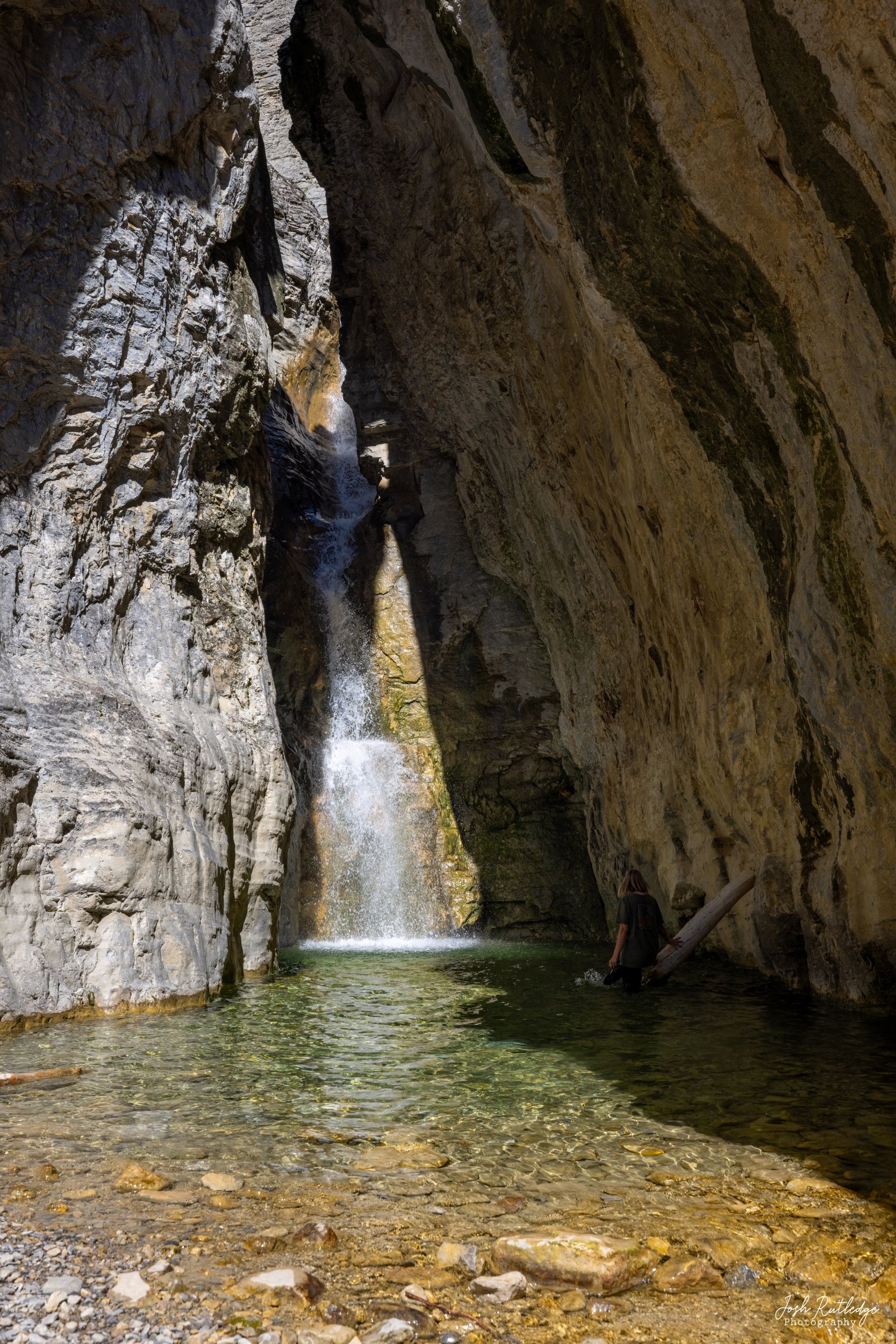

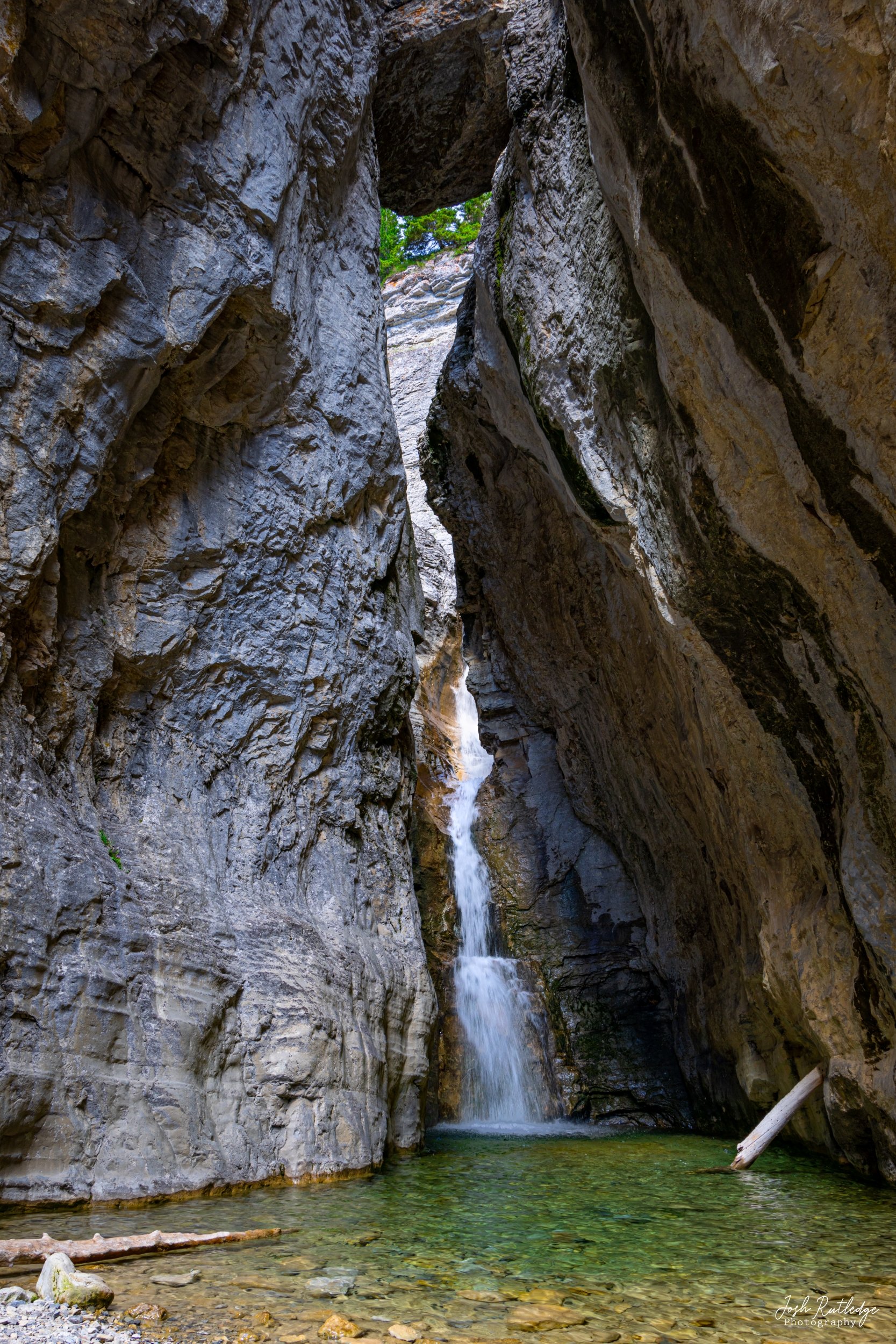

We had a great time on our hike, and I would highly recommend it as a day hike for anyone that is interested. It is a little bit off the beaten path, but I think that might be part of the appeal for me. If you are interested in visiting other areas along the Rocky Mountain Front, you might consider checking out these other blog posts I made. New Year’s On the Rocky Mountain Front and Our Lake (Hidden Lake).
Check out the gallery of pictures below for some additional shots of the slot canyon. My sister is featured in all of them for some perspective.
I will do my best to try and describe how to get to the trailhead so hopefully you can avoid the mistake we made. There are some cut off roads that come up from the south, off the Teton Canyon Road, that can get you to the right area, but I think it’s most direct if you plan to access the trail through Bynam, Montana. Bynam is about 14 miles north of Choteau or around 40 miles north of Augusta where we were staying. The closest large city would be Great Falls about 65 miles south east or Browning which is about 55 miles north west.
You can reach Bynam on Highway 89. This highway runs from the Canadian border north of Babb, Montana down to around SunRiver (west of Great Falls). I would assume most people would be coming from an eastern or southern direction, but if you are coming from the north (maybe from Glacier National Park?) the directions would be the same once you reach Bynam. Assuming you are coming from the south, you will see the Montana Dinosaur Center and the Trex Agate Shop on your left and you will know you are getting close to your turn. If you are coming from the north and you see them, then you went just a bit too far. There are only a couple of streets in the small town of Bynum, and you want to take Central Avenue. After a couple of blocks, you will see a white school house on your right and the road keeps going straight up over the hill. You want to turn right, in front of the school, which is 3rd Street and keep going north. If you take any of the other roads through town off the highway, they will intersect 3rd Street as well, so you really can’t miss it. Once you get through town heading north, you will see some trees ahead and the road will turn to the left in front of the trees, keep to the left. The road then turns into Blackleaf Road. Keep going on this road for about 14 miles until you see the sign for the Blackleaf WMA. Do not go through this entrance, turn to the left instead. This road is called Knowlton Road or Blackleaf Cutoff Road. Follow this road for a little over a mile, maybe a mile and a quarter, and you will go across a cattle guard, take the right immediately after the cattle guard. If you end up approaching a farm, you went too far. Stay on the road for about a half a mile and then the main road is going to turn to the left and you will see a small less used road that keeps going straight, take that road going straight. After about a quarter of a mile you will see a large gate. Go through this gate, just make sure you close it behind you. Stay on this road for about another 2.5 miles until you reach another gate, this is where you will want to park and start your hike. There is kind of a wide spot with plenty of room for parking. The trailhead is to your right as you are looking at the locked gate. There is a sign there for closure dates, but nothing that says “Muddy Creek Falls” or anything. From the trailhead you will be looking up the Muddy Creek Canyon, so as I said, as long as you keep working your way up that canyon, you really can’t get lost.
You can view the pictures below for a visual reference for key navigational points mentioned above.
After our hike we drove through Choteau on our way back to Augusta and stopped for an ice cream at the Old Trail Museum. It is kind of a tradition in our family to stop for ice cream when you are passing through. We also pulled over for a minute on our way back to Augusta to overlook the Egg Mountain dinosaur dig site.
Some huckleberry ice cream.
Overlooking the Egg Mountain dig area.
The sign along the highway explaining Egg Mountain.
Another angle overlooking the Egg Mountain dig site.
Once back in Augusta, we found some dinner and took a little time to relax. There are several options for eating in Augusta including the Buckhorn Bar, the Western Bar and the Lazy B Bar and Cafe. They all seemed popular (busy) and over the course of the weekend we tried most of them and they were all good. After a short rest back at the motel, we then drove a short ways out of town to see if we could get some sunset pictures of the Rocky Mountains in the background. There were some storms that came in, so we never got exactly what I was hoping for, but I still got a couple of interesting shots of the sunset. The fist picture at the top of this blog post was also from this evening.
Some gate posts and barbed wire set against the sunset on the Rocky Mountain Front near Augusta, Montana.
The next morning we got up to explore Wagner Basin in the Sun Canyon area. The Sun Canyon can be accessed by heading west out of Augusta. There are a lot of things to explore in this area. Eventually you will end up at Gibson Dam if you keep following the canyon all the way up. Even if you don’t get out and hike, I would highly recommend just taking a drive up the canyon. The views of the mountains are spectacular and there is a short walk to an overlook of Gibson Dam and Reservoir that is worth checking out. There is also a small diversion dam on the way into the canyon where the Sun River and the main irrigation canal are divided from the flows out of Gibson Reservoir.
A panorama of the beaver pond area in Wagner Basin.
To access Wagner Basin (or Sun Canyon) from Augusta, head south on Main street until you come to the stop light (it’s the only stop light in town) and then turn right (west) onto Manix St. You will see the sign for Gibson Reservoir. Or turn left at the light if you our coming north on Highway 435 or keeping going straight through the light if you are coming from the east off Highway 287. Just keep going straight on this road and eventually you will leave town and it will turn into the Sun Canyon Road. You will eventually come to a Y in the road, and you will want to keep to the right. If you keep going straight (to the left) you will eventually end up on the Sun River Game Range (also an interesting area to explore). Keep following the Sun Canyon Road and eventually you pass the diversion dam and you will start going up the canyon. You will pass a campground and shortly after you will see a bridge on your right and this is Hanna Road, that is where you want to turn and go across the bridge. Once you get across the bridge you will see a turn to the right shortly after you cross, keep going straight. Eventually you will see another right, take that one. You will pass by some cabins and eventually the road just kind of dead ends in an open area where you will want to park. The trail follows along the river and goes in front of the rocky cliffs.
Wagner Basin is kind of a choose your own adventure type of area. There is a well developed trail that goes for about a half a mile and then it just kind of ends in the meadow. There is a beaver pond, a tree with some interesting skull art and a broken down picnic table. Once you get past this area, there is really no well defined trail. The best “trail” we could find kind of follows the beaver pond and then past some brushy areas and then starts to climb up the basin a bit. There are some hikes that use this area as a jumping off point, such as hiking Castle Reef. We chose to just kind of climb up on the hills to the north to see what we could find. We actually did not find a lot the day we were there. The area is supposed to be good for viewing bighorn sheep and some wildflowers my sister was interested in finding, but we did not find either. There are some pictographs and a cave shortly after you leave the parking area that were interesting though. I will probably have to try exploring this area again on a different day to see if maybe my luck would change. While we didn’t see a lot, it was still fun to get out and explore a little bit.



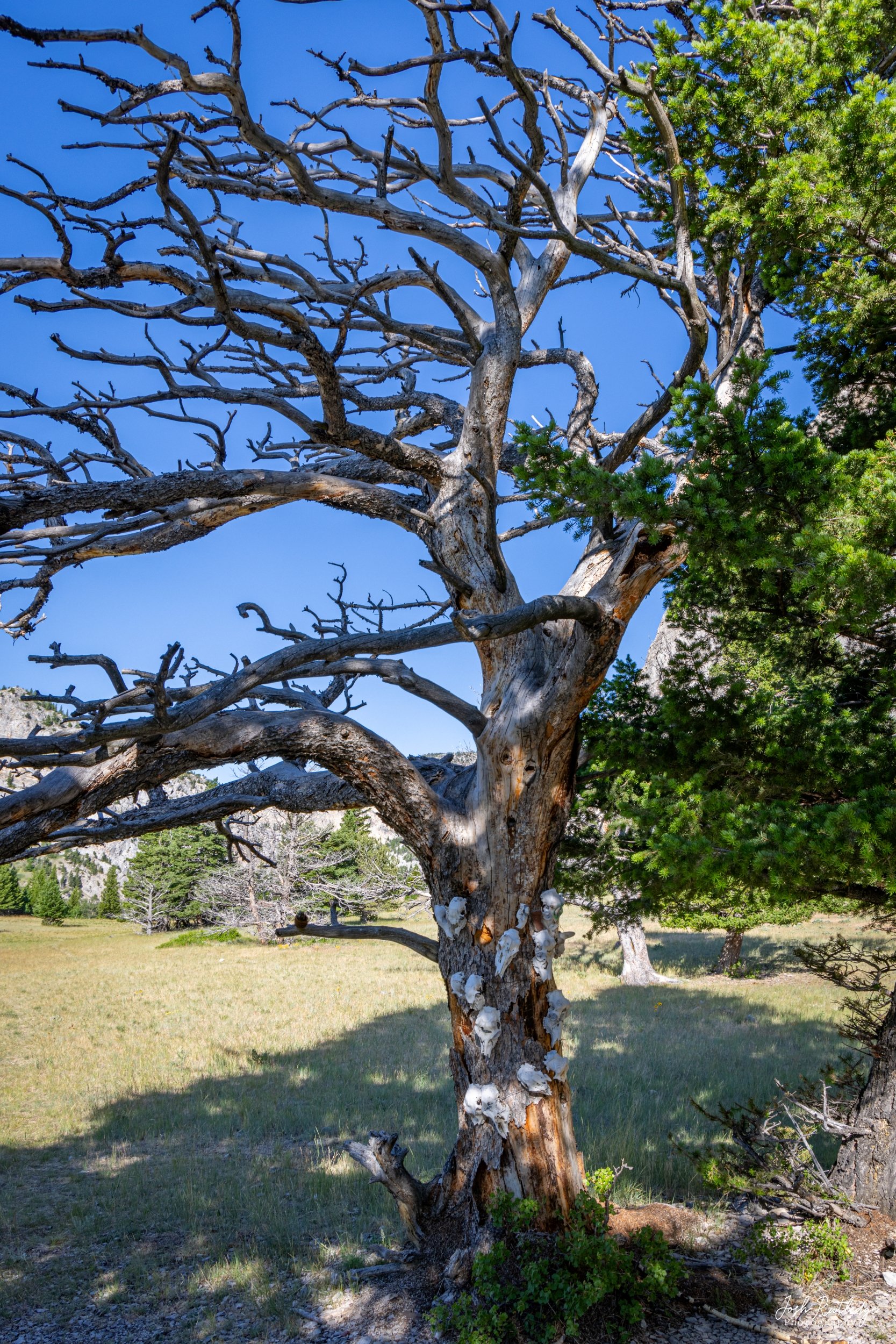









After hiking back out and spending some time in the canyon, it was time to head home. There are so many areas along the Rocky Mountain Front that I still feel like I have just started to scratch the surface. I have no doubt I will be spending more time exploring more areas, and I will do my best to share those with you.







